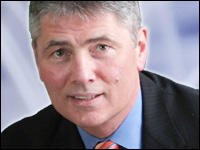
This summer, I have been doing a lot of research into sustainability and have developed some thoughts that relate to CRM, especially CRM 2.0.
The whole idea of “sustainability” deserves some contemplation. Too often we see the word applied to just about anything that needs to look a little bit green. Sustainability and related words absolve a multitude of sins. For instance, the paper bag you get at the store is now “recyclable” — a sustainable idea, which basically says that if you care to recycle it, that’s great, but you are on your own. The paper making up the bag is new and has never been near a recycling center.
Sustainability is like that. Many corporations claim that their practices are sustainable, but who knows? Would anyone intentionally tell you that a business practice is harmful or unsustainable? The data tells another story, and the literature I have been reading tells me that we’re using resources at a rate that’s about 25 percent above the earth’s ability to renew them. That means minerals, paper or trees, water, energy and more.
There are no bad guys in this story, and to a large extent a growing population is the root cause. There are more than 6 billion of us on the planet, and the emergence of large countries like China and India from centuries of poverty and economic stagnation, ready to adopt first-world life styles, adds to the challenges.
Stealing Something From the Future
The relationship to CRM is really pretty straightforward from my perspective. Since its inception, CRM has been a tool used, in part, to stoke demand and accelerate closing deals. However, as a sales manager told me early in my career, when you accelerate a close, especially with an incentive such as a discount, you are really stealing something from the future, and that’s not sustainable.
There is no doubt that the CRM we have used has been a valuable tool in spreading new technologies and services around the world. Stealing from the future is what you need to do in a market share war, and that is the typical situation in a new market. When product categories are new, the products sell themselves, but today the story is a bit different. For the most part we don’t see many new products and product categories today — at the moment there are some very nice second- and third-generation products out there, but they need to be sold differently.
If you are a regular reader of this column, you know that I have written about the changing market many times before, but the thing that amazes me, especially in light of an emerging sustainability issue, is that the CRM marketplace is organizing itself organically around a different paradigm: CRM 2.0.
Getting There
We might disagree about CRM 2.0 being a different paradigm, but I think the evidence is pretty convincing. The motive force for CRM 2.0 is doing what it takes to get a clear picture of customer demand. This information feeds into product development as well as message formulation and that, combined with a more nurturing approach to closing, gives us CRM 2.0.
As I said, the amazing thing to me is that no one waved a magic wand and said CRM should be this way. Instead, a lot of profit-motivated entrepreneurs have been sampling the market, and some of them have come up with this idea.
It’s important to note also that no one formalized a discussion about sustainability in business and what the software industry could do to foster it. If the thought leaders in the sustainability movement are on to something and we really are using resources at unsustainable rates, then it will be interesting to see what additional modifications the CRM industry can invent.
I have recently begun counseling my vendor clients that fuel costs will make travel increasingly difficult. OK, so you don’t need to be a weatherman to know which way the wind blows (thanks, Bob), and you don’t need to be an oil company executive to understand that transportation is under stress. What does that mean for CRM? This time the solution won’t be developing tools that help you close a deal faster. I am thinking that tools that enable us to be in front of customers virtually rather than physically will gain a lot of traction in the years ahead, and I’ll have a report on the subject next month.
Pretty soon they’ll convene another Sales 2.0 conference in San Francisco, and I’ll bet sustainability will be an important theme.
Denis Pombriant is the managing principal of the Beagle Research Group, a CRM market research firm and consultancy. Pombriant’s research concentrates on evolving product ideas and emerging companies in the sales, marketing and call center disciplines. His research is freely distributed through a blog and Web site. He is working on a book and can be reached at [email protected].





















































